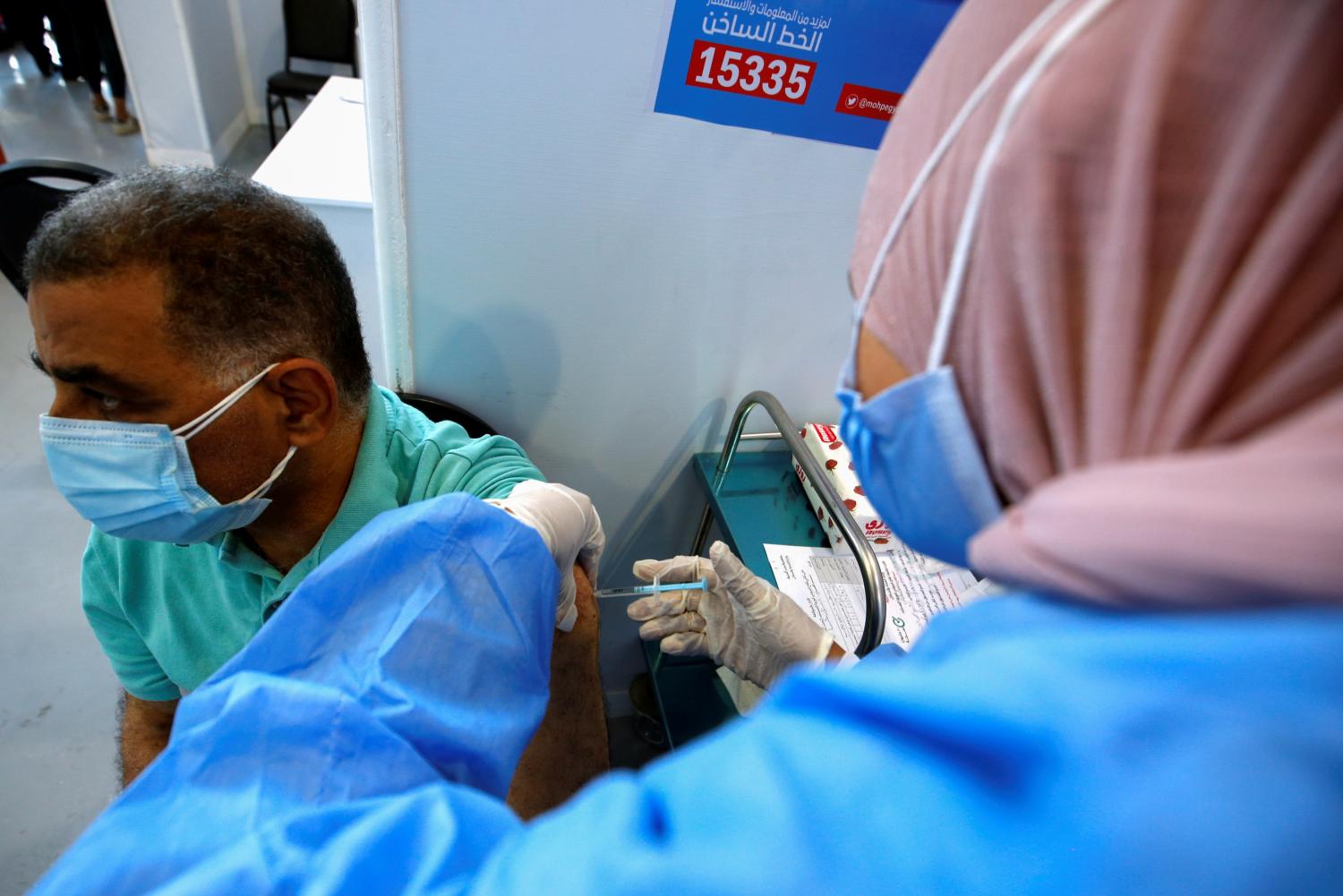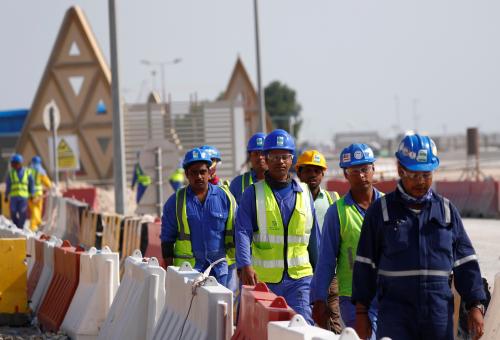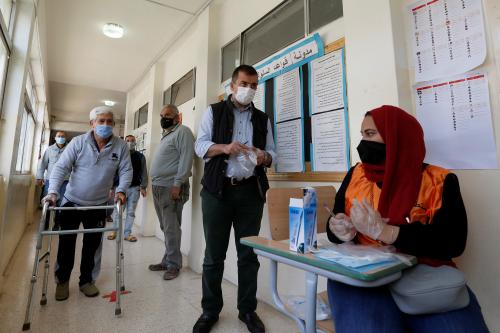Content from the Brookings Doha Center is now archived. In September 2021, after 14 years of impactful partnership, Brookings and the Brookings Doha Center announced that they were ending their affiliation. The Brookings Doha Center is now the Middle East Council on Global Affairs, a separate public policy institution based in Qatar.
Since multiple vaccines for COVID-19 became available at the end of 2020, countries across the world have struggled to ensure that their populations have access to sufficient quantities of the vaccines. Global vaccination efforts have been stymied by economic and logistical challenges, as poorer countries struggle to afford vaccines, queue for vaccine supplies through the global COVAX initiative (which seeks to provide vaccines to countries who may not otherwise receive them), and determine how to ensure the safe and effective distribution of vaccines given that most vaccines need to be delivered through two shots and require cold storage. Moreover, in some countries, the efficacy of vaccination campaigns is being undermined by hesitancy among the public and disinformation about the risks of vaccination. Internationally, as of July 2021, only 26% of the world’s population has received at least one dose of the vaccine; importantly, only 1% of those living in low-income countries have received at least one dose.
These global challenges are reflected in vaccination outcomes in the MENA region as well, where only 12% of the total population has received at least one dose of the vaccine. Wealthier countries in the region have led the inoculation efforts. The United Arab Emirates (UAE), which launched its vaccination campaign at the end of December 2020, has been able to ensure that about 75% of its population has received at least one dose. Similarly, Bahrain has provided at least one dose to 63% of its population, and Qatar, while starting distribution later than both these countries, has provided at least one dose to 62% of its population. Other Gulf states lag these leaders, but each has made significant progress in distributing the vaccine.
In contrast, vaccination outcomes in the MENA region’s low- and middle-income countries, and particularly those mired in conflict, lag well behind. Outside of the Gulf, Jordan (25%) and Morocco (27%), no country in MENA has been able to provide more than 15% of their populations with one dose of the vaccine. In Iran and Egypt, the region’s largest populations, vaccination rates are below 5%, while in conflict-ridden Syria and Yemen, the figure is below 1%.
In contrast, vaccination outcomes in the MENA region’s low- and middle-income countries, and particularly those mired in conflict, lag well behind. Outside of the Gulf, Jordan (25%) and Morocco (27%), no country in MENA has been able to provide more than 15% of their populations with one dose of the vaccine. In Iran and Egypt, the region’s largest populations, vaccination rates are below 5%, while in conflict-ridden Syria and Yemen, the figure is below 1%.
Paul Dyer is a policy analyst with Brookings Doha Center, and Isaac Schaider and Andrew Letzkus are data analysts with the Brookings Doha Center.



